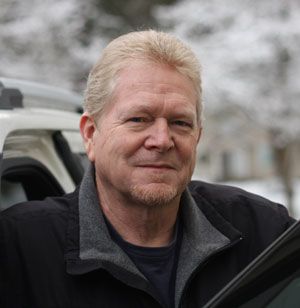Local drivers’ questions
The intersection at Wellesley and Freya is closed for the construction of a roundabout there. Just as I read about that, an email from reader T.R. arrived, asking, “Can you comment on the proper rules when using the traffic circles at intersections, where each direction has a Yield sign?”
Such queries have been common since the state of Washington began constructing roundabouts in our area as a means of “passive” intersection traffic control. An error I notice drivers making is when they routinely stop before entering the roundabout. One must yield to vehicles already within the circle that represent an immediate hazard, but may move freely into the circle if able to do so “seamlessly.” That means arriving drivers should proceed into the roundabout without stopping if traffic is clear at the entrance point. Additionally, motor vehicle drivers must yield to pedestrians there, since every entrance to a roundabout may have a crosswalk.
After entering, drivers can simply signal and turn right out of the circle at their desired “exit” for accomplishing an overall direction of right, straight or left. The detailed rules of operation are specified at the Washington DOT Website: https://www.wsdot.wa.gov/safety/roundabouts.
With all the talk of self-driving vehicles, B.H. wondered, “I read a fair amount of coverage [about autonomous cars], mostly online, and have yet to uncover any info on where the car insurance companies weigh in on this. That could be a deal killer. Do you know anything?”
Like B.H., I have not seen much detail of insurance ramifications concerning autonomous vehicles. I think insurance companies are waiting to see the final direction of the technology. Determining fault will be the main conundrum — will it be the vehicle owner, vehicle manufacturer, autonomous system component manufacturers, or someone else? Sorting that out will be difficult, and courts will have a mighty task assigning financial responsibility.
At the very least, emergence of the technology will alter insurers’ long term business models. Future autonomous cars and current autonomous features (automatic braking, lane departure prevention, et cetera) will indeed lower accidents. It’s doubtful that insurers will lower rates, however, since the cost of repairs to self-driving vehicles will be higher when inevitable wrecks do occur. Industry analysts do claim, however, that rate drops may take place as the accident reduction becomes more plentiful and permanent.
Moody’s analyst, Jasper Cooper, forecasts, ““We expect significant industry changes over time including product diversification, innovation, consolidation, failure, and the rise of new entrants better able to capitalize on new trends.”
Of course, reader/driver pet peeves continue to amass, including some from D.C, who expressed, “My pet peeve is inconsiderate drivers, who think they are the only ones on planet earth.” As an example he noted, “When I’m sitting at a stop light waiting for the traffic to clear so I can make a free right turn and a driver pulls up alongside in an SUV / truck, but stops in the crosswalk so I cannot see around him / her to monitor the traffic.” And he added, “I’m traveling down the single lane road, with the proper distance between me and car in front. There is no traffic behind me, but some inconsiderate driver comes zooming up, goes around me and makes an unsafe insertion between me and car in front. What makes those people think their time is more valuable than everyone else?”
Why indeed.
Readers may contact Bill Love via e-mail at precisiondriving@spokesman.com.
